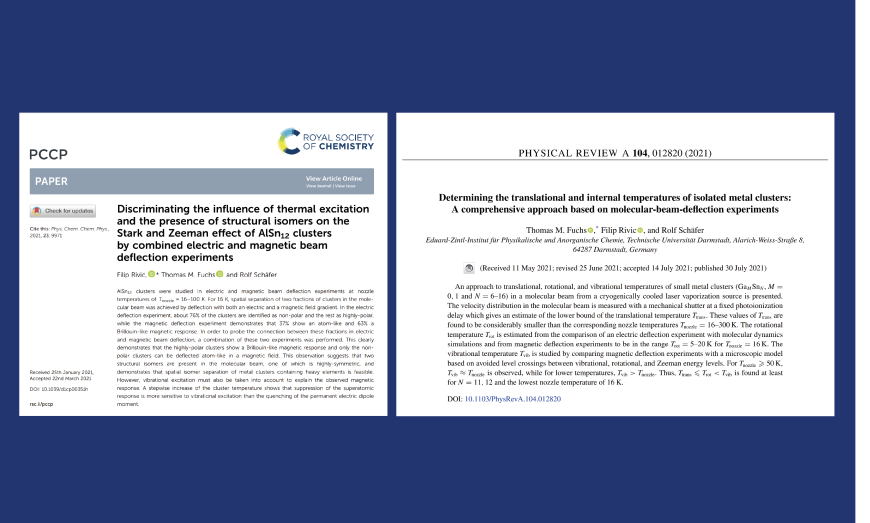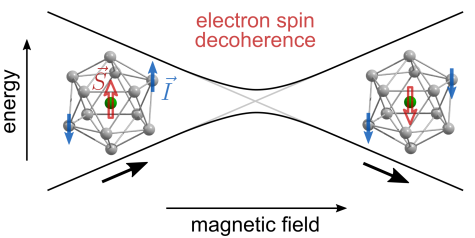Recent Publications
2021/08/01
Our publications in the last months are related to p-doped tin clusters studied in electric and magnetic deflection experiments. First, the spin dynamics of the Sn12Al cluster was studied in double deflection experiments (magnet-magnet), where it was observed that an increase in the number of nuclear spins leads to increased spin flips. In another work with Sn12Al, two fractions were observed in the electric deflection experiment, which were also studied isomer-selectively in double deflection experiments (electrode-magnet), showing that two isomers are simultaneously present in the molecular beam. In the third work, the focus was on determining the vibrational, rotational, and translational temperatures of SnNGa clusters, thus extending our general understanding regarding cluster formation and cooling in our apparatus.









